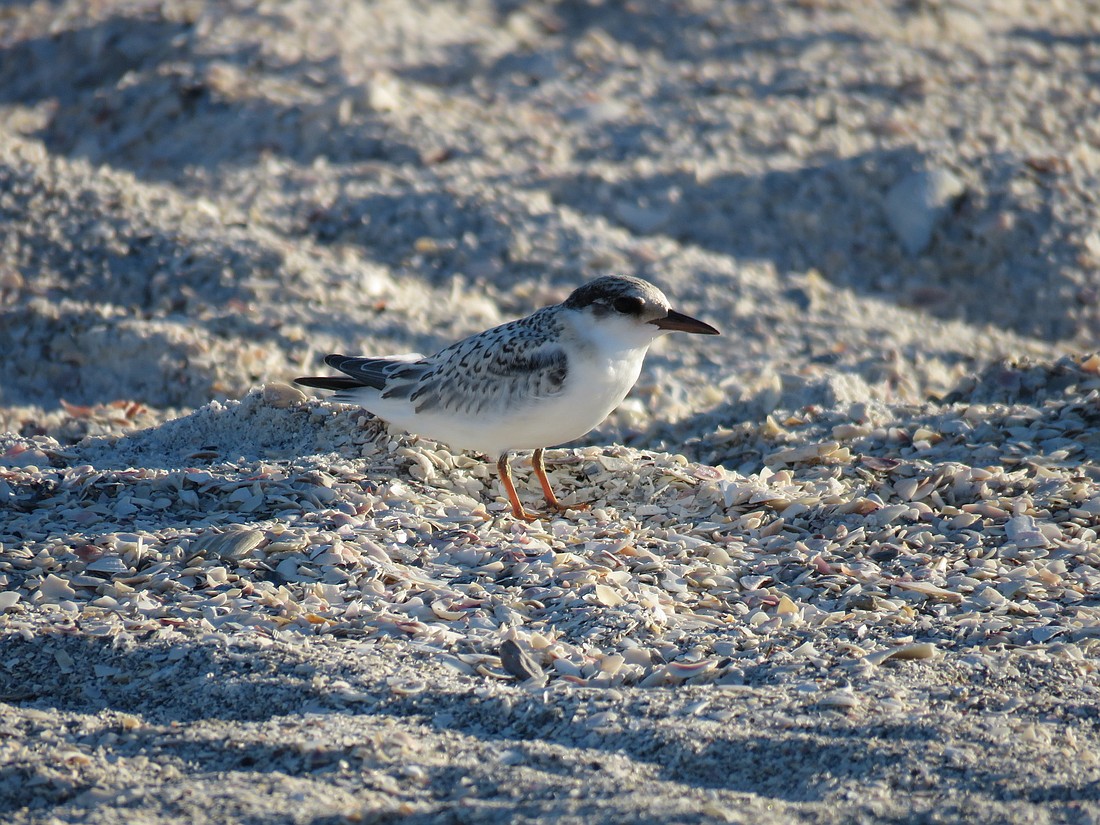- April 25, 2024
-
-
Loading

Loading

The northern half of Longboat Key hadn’t seen a least tern colony in at least eight years.
Until this year.
In the middle of June, 176 least tern adults laid 88 nests and were raising 19 chicks. The colony was growing. But then, a cat showed up on June 28.
The next day, eight chicks were gone and 25 nests were abandoned.
Gradually, the nest count decreased. Two weeks after the initial cat sighting, the colony was down to 33 nests. Another two weeks later, it was down to three.
Greg Taylor, shorebird project coordinator of Audubon Florida, saw a brief glimpse of the cat. After his sighting, Taylor saw tracks in the following days and said the town of Longboat Key went door to door to talk to people who lived in the area. Taylor isn’t sure whether the cat was feral, but cat owners in the area said they kept their pets indoors.
Taylor said the cat is the most likely explanation for the dwindling colony. Once the cat showed up, the birds weren’t able to raise any chicks to adulthood. The only chicks to survive were those that could already fly.
Cats are second to habitat loss in terms of effects on birds, Taylor said. Every summer, least terns, which weigh about 40 grams on average, fly to Florida from the northern coast of South America, which is about 1,000 miles.
“They work so hard to come here and make families,” Taylor said.
“I think it’s just pretty sad for a single cat to prevent them from doing that this year, and they go home without any babies.”
Whitney Beach resident John Ginaven checked the least tern colony every three days. Although he never saw the cat, he heard about it and upon checking the colony, he found only two least terns still on site.
“It seemed like it was too empty, too fast,” he said.
Taylor said it was unusual for the colony to show up and be as large as it was. Least terns have been a threatened species in Florida since 1975.
“Right now, 80% of all least terns in Florida don’t nest on the beach,” Taylor said. “They nest on flat gravel rooftops and that’s because there’s so much development and disturbance on the coast that they just can’t deal with it.”
Stu Wilson, a Sarasota resident and birdwatcher who frequents Longboat Key, said because Longboat Key is so narrow there’s less space for the shorebirds to nest, which makes them more susceptible to such things as beach raking or high tides.
To help keep shorebirds safe, Wilson recommends people avoid running through a nesting colony and not leave trash on the beach. In addition, he said keeping pets indoors will be beneficial. Ginaven echoes those feelings.
“Cats are just devastating when they’re outdoors,” he said. “They should all be indoors. I mean, I had cats myself and love them, but you should keep them indoors. Even if they’re well fed, they will kill birds, and they’ll bring one back home to show the owners their prize.”
This colony isn’t, and won’t be, the only colony that struggles. Taylor said he thinks a raccoon could be responsible for the failing of a snowy plover nest on the south end of the island. Ginaven said black skimmers nested near the least terns and disappeared around the same time.
“It’s sad when that happens,” Ginaven said. “When you’ve got such a good colony, and it may deter them from coming back next year. We’ll find out, I guess, next April.”
CORRECTION: This article has been updated to list the accurate weight of a least tern bird.